Muscat is the capital of Oman and is known for its rich history, culture, and modern attractions. It is surrounded by mountains and the Arabian Sea, making it an interesting place to explore. The city has a mix of traditional markets, historical forts, and beautiful mosques. Visitors can explore Mutrah Souq, the Sultan Qaboos Grand Mosque, and walk along the Corniche. There are also museums and beaches where people can relax or try water activities. Muscat has something for everyone to experience, whether you enjoy shopping, history, or local food.
Location
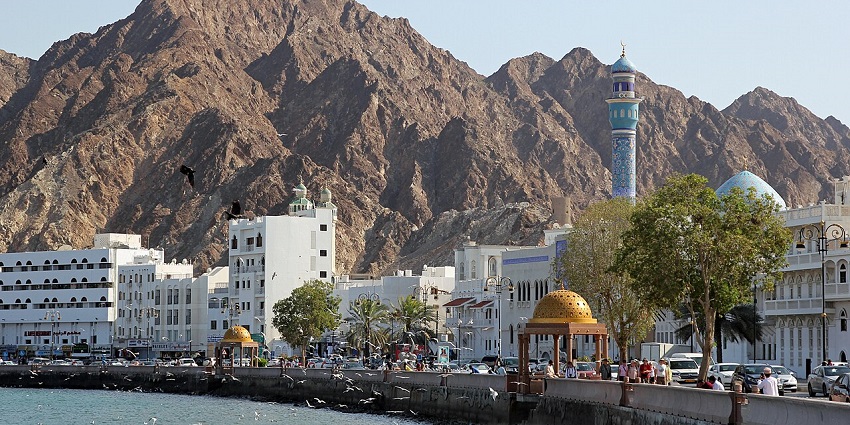
Photo: Eduard Marmet / Wikimedia Commons
Muscat is located on the southeastern coast of the Arabian Peninsula, along the Gulf of Oman. It serves as Oman’s political and economic hub and is surrounded by rugged mountains and a stunning coastline.
How To Reach
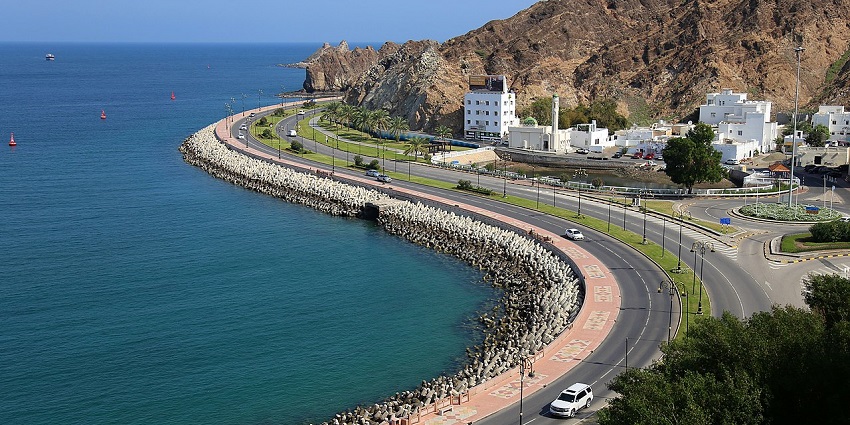
Photo: Safa.daneshvar / Wikimedia Commons
Reaching Muscat is easy, with multiple travel options for international and regional travellers.
By Air: Muscat International Airport (MCT) is the primary gateway to the city. It receives direct flights from Europe, Asia, and the Middle East. Major airlines such as Oman Air, Emirates, and Qatar Airways operate regular flights. The airport is 15 km from the city centre, with taxis and car rentals available.
By Bus: Bus services connect Muscat with neighbouring cities in Oman and the UAE. Mwasalat, the national bus service, runs daily routes between Muscat, Dubai, Abu Dhabi, and Salalah.
By Rail: Currently, Muscat does not have a railway system. However, road networks are well-developed, and private taxis or rental cars are the best alternatives for commuting.
Places To Visit In And Around Muscat
From ancient forts to modern attractions, Muscat offers a mix of heritage and leisure experiences.
1. Sultan Qaboos Grand Mosque
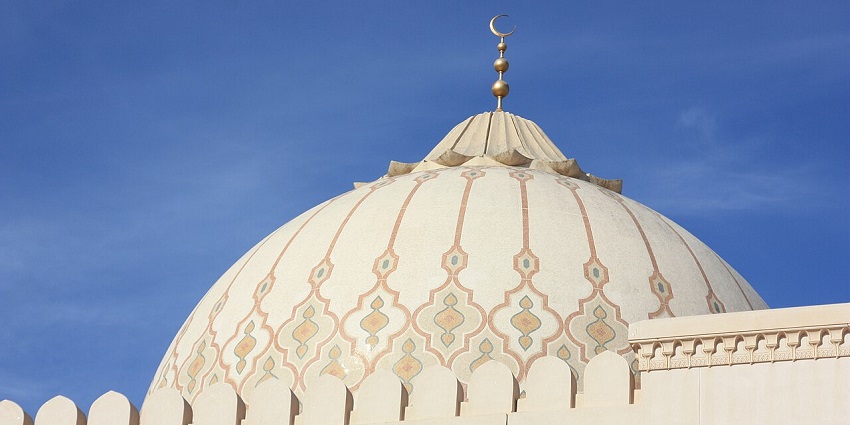
Photo: Rrburke / Wikimedia Commons
The Sultan Qaboos Grand Mosque is one of the most important religious sites in Muscat. Completed in 2001, it was a gift from Sultan Qaboos to the people of Oman. The mosque can hold over 20,000 worshippers at a time. The prayer hall features a huge Persian carpet that took four years to weave, making it one of the largest handwoven carpets in the world. The chandelier hanging in the main hall is made of Swarovski crystals and weighs over 8 tonnes. Visitors can walk around the mosque’s courtyards and admire the intricate Islamic calligraphy on the walls.
Timings: 8 AM – 11 AM
Entry Fee: Free
Ideal Trip Duration: 1 – 2 hours
2. Mutrah Souq
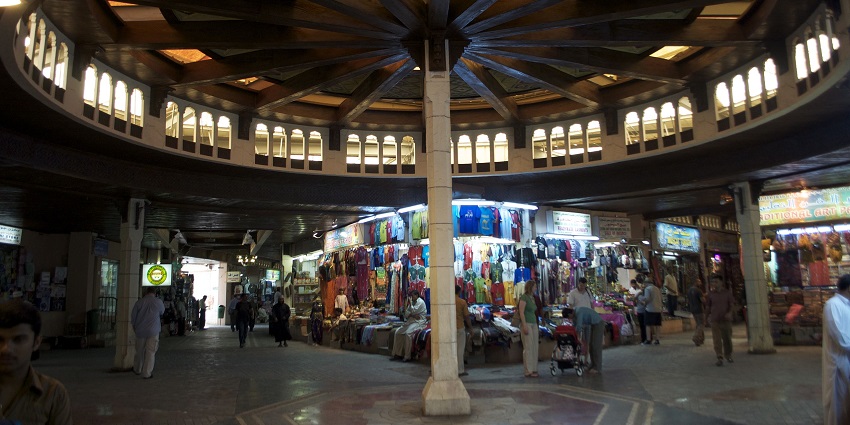
Photo: Shawn Stephens / Wikimedia Commons
Mutrah Souq is one of the oldest markets in Oman and a key attraction in Muscat. The souq has been a trading centre for centuries, where merchants sold goods brought in by sea. Today, that traditional charm still holds, with small alleys filled with stalls selling Omani silver, frankincense, traditional garments, and spices. The market is lively, with traders calling out their wares and the scent of sandalwood filling the air. Bargaining is common here, so visitors can try negotiating prices. The souq is also great for souvenirs like Khanjar (traditional Omani daggers) and handcrafted ceramics.
Timings: 8 AM – 1 PM
Entry Fee: Free
Ideal Trip Duration: 2 hours
3. Al Jalali And Al Mirani Forts
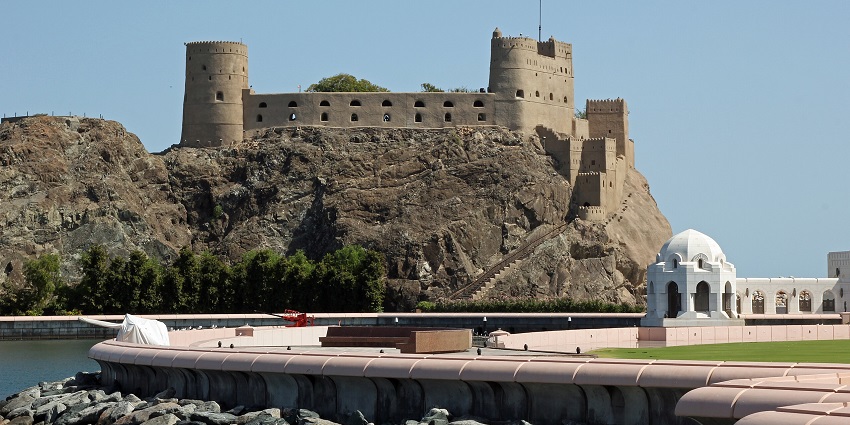
Photo: Eduard Marmet / Wikimedia Commons
Al Jalali and Al Mirani forts stand as a reminder of Oman’s past. Built by the Portuguese in the 16th century, they were once used to protect Muscat from invaders. Over time, they served different purposes, including prisons and military strongholds. Though the forts are not open to the public, visitors can still admire them outside. They offer a stunning backdrop to the harbour and are great spots for taking photos of Muscat. The forts are lit at night, creating a striking view from the Corniche. There are also viewpoints nearby that offer a closer look at these historic structures.
Ideal Trip Duration: 30 minutes
4. Royal Opera House Muscat
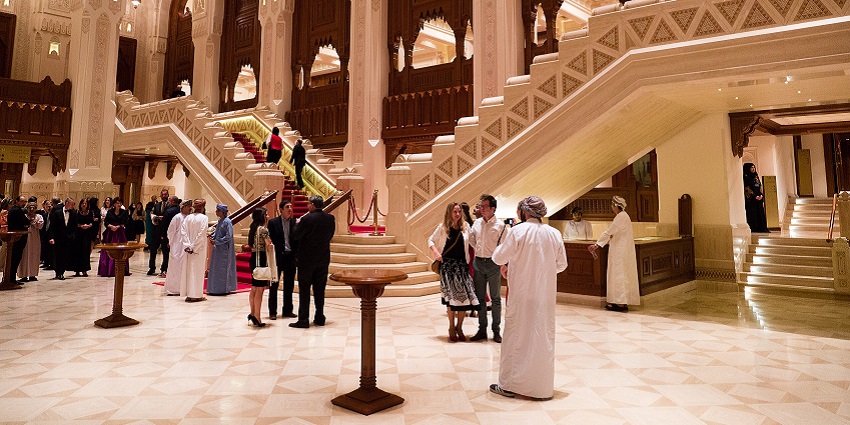
Photo: Juozas Salna / Wikimedia Commons
The Royal Opera House Muscat is an important cultural landmark in Oman. Opened in 2011, it is the first opera house in the Gulf region. The building’s design reflects traditional Omani architecture with modern influences. The theatre hosts international performances, including opera, ballet, and classical concerts. The acoustics are world-class, making it a popular venue for music lovers. Apart from shows, visitors can take guided tours to explore the stunning interiors, including the grand chandeliers and fine woodwork. The opera house also has luxury boutiques and restaurants, making it a great place to visit even without attending a performance.
Timings: 10 AM – 6 PM
Ideal Trip Duration: 1 – 2 hours
5. Qurum Beach
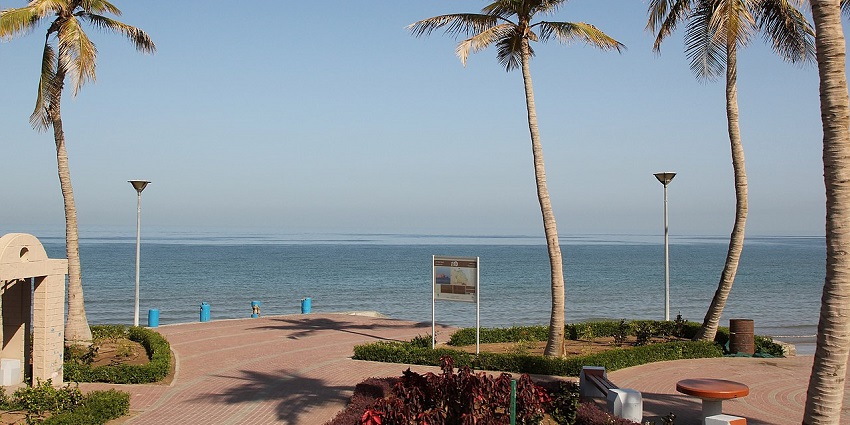
Photo: Eduard Marmet / Wikimedia Commons
Qurum Beach is one of the most visited beaches in Muscat, stretching along the coastline with soft sand and clear waters. It is a popular spot for both locals and tourists to relax or take a walk along the shore. The beach is ideal for swimming, and water sports like jet skiing and paddleboarding are available. Cafes and restaurants line the area, offering local and international food. The beach is also known for its beautiful sunset views. Joggers and cyclists often use the beachside pathway, making it a lively spot throughout the day. Nearby parks provide additional space for families to enjoy outdoor activities.
Timings: 24*7
Ideal Trip Duration: 2 – 3 hours
Where To Stay

Photo: ManuelaJaeger / Pixabay / Image For Representation Only
Accommodation options in Muscat range from luxury hotels to budget-friendly stays. The Shangri-La Barr Al Jissah offers a premium beachfront experience, while Park Inn by Radisson provides a comfortable mid-range option. For budget travellers, Mutrah Hotel is a good choice. Booking in advance is recommended, especially during peak tourist seasons.
Where To Eat

Photo: piviso / Wikimedia Commons
Muscat has a diverse food scene, with local Omani cuisine and international options. Kargeen offers traditional Omani dishes in an atmospheric setting, while Turkish House is famous for its grilled seafood. For Indian flavours, Begum’s serves delicious biryanis. Street food lovers can try shawarma and mishkak (grilled meat skewers) from local vendors.
Best Time To Visit

Photo: Ank Kumar / Wikimedia Commons / Image For Representation Only
The best time to visit Muscat is from October to April when the weather is pleasant. Temperatures range between 20°C and 30°C, making it ideal for sightseeing and outdoor activities. Summers (May to September) can be extremely hot, with temperatures exceeding 40°C, which is unsuitable for travel.
Other Factors To Consider
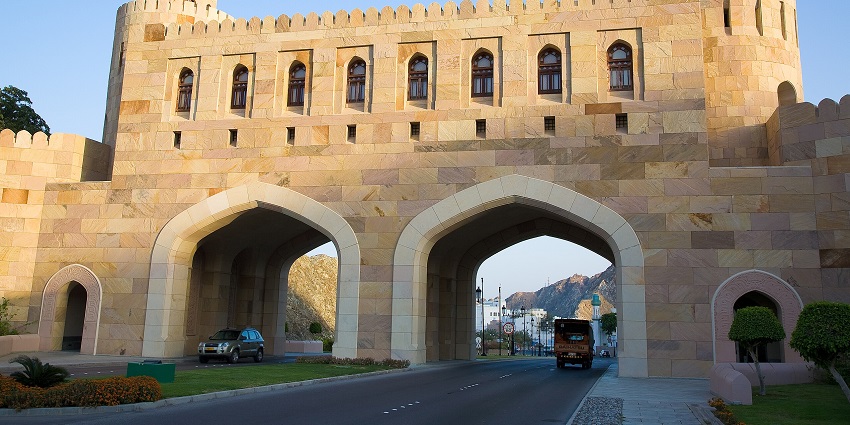
Photo: Andries Oudshoorn / Wikimedia Commons
Average Cost Of The Trip
The Average Cost of the Trip to Muscat depends on travel style. A mid-range budget for a week-long trip would be around OMR 300 (₹65,000), covering accommodation, food, transport, and sightseeing. Luxury travellers may spend over OMR 600 (₹130,000), while budget travellers can manage within OMR 150 (₹32,000).
Tips For Travellers
- Taxis and rental cars are the best ways to explore the city.
- Modest clothing is recommended in public places.
- Public displays of affection and loud behaviour should be avoided.
- These are available at the airport for better connectivity.
Muscat is a city that blends history and modern life, making it a great destination for travellers. With its traditional markets, impressive forts, and beautiful coastline, there is plenty to see and do. Plan your visit to explore its cultural sites and enjoy local food. Book your trip with TripXL to make your travel hassle-free and experience the best of this unique city.
Cover Photo: patano / Wikimedia Commons


 WhatsApp
WhatsApp
 Twitter
Twitter









